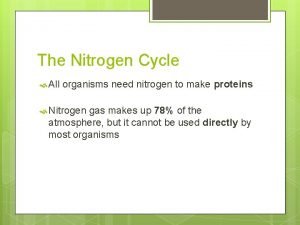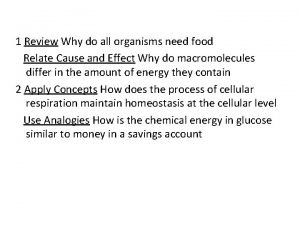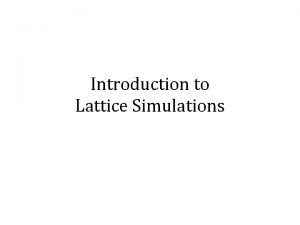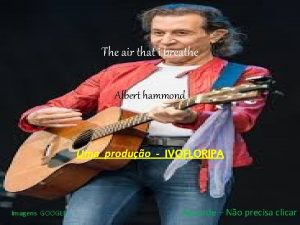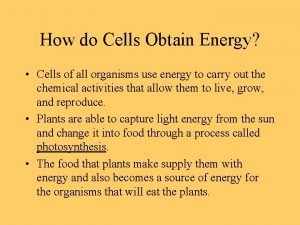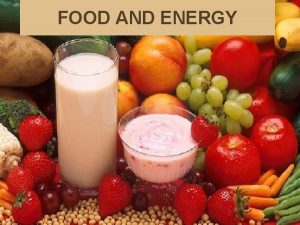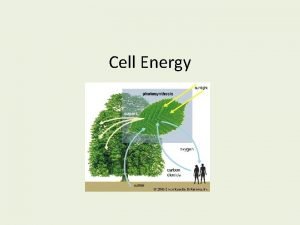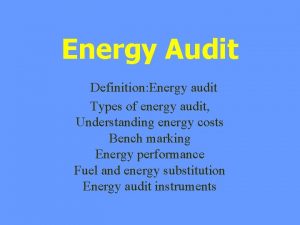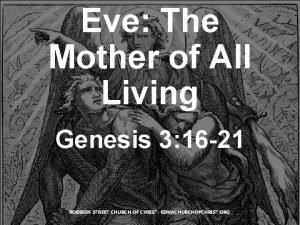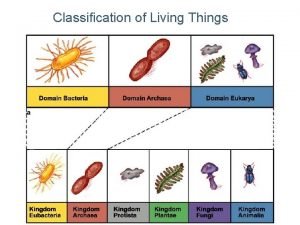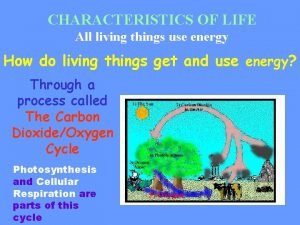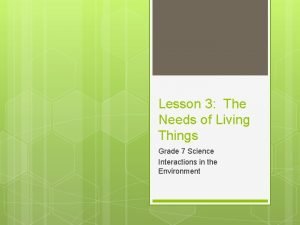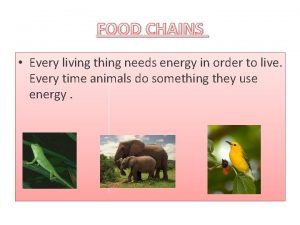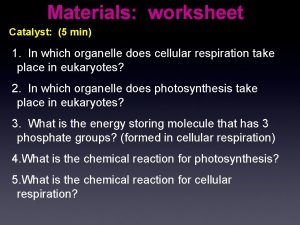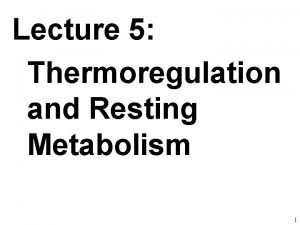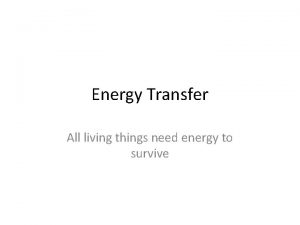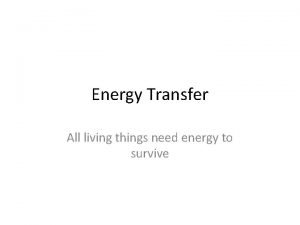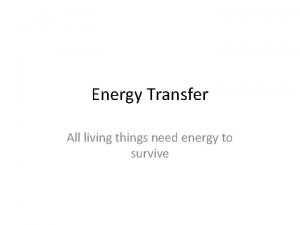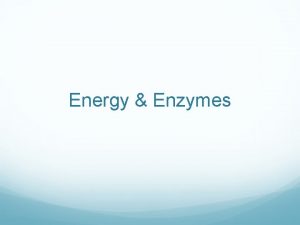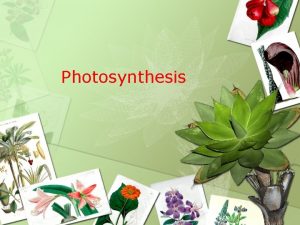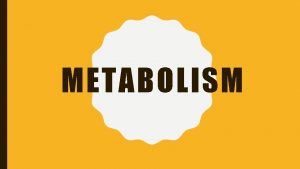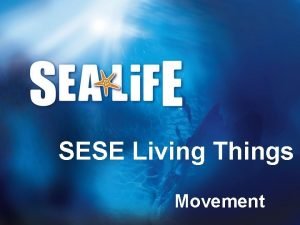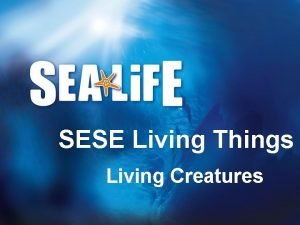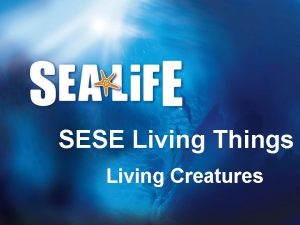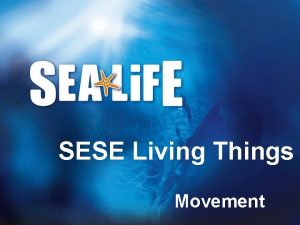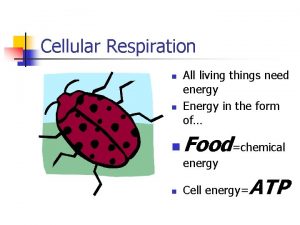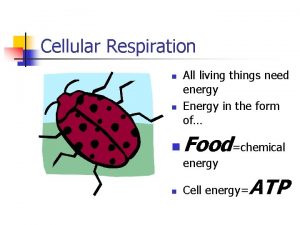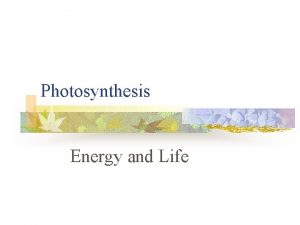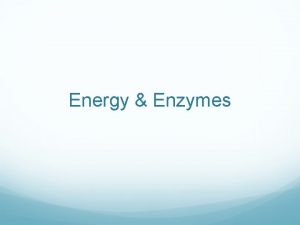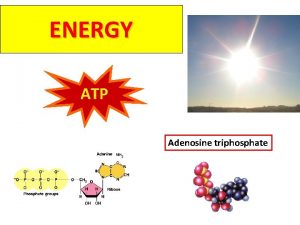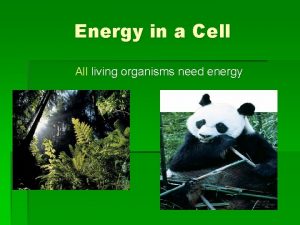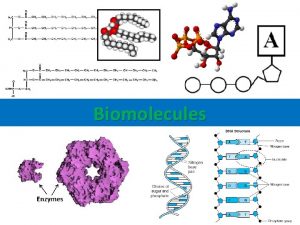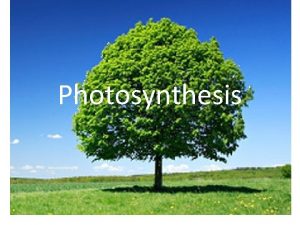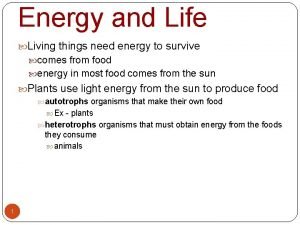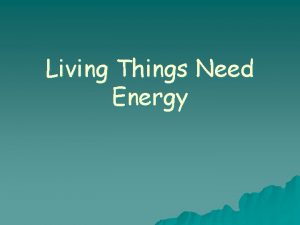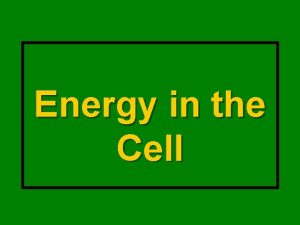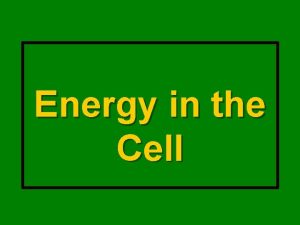All living systems need energy ENDOTHERM ECTOTHERM Do





































- Slides: 37

All living systems need energy ENDOTHERM ECTOTHERM


Do this: hold your breath. How long can you do so? …but don’t be this guy! p. s. : time to beat is 2 min 15 sec (Emer) seconds…and he did not die.

Who is Stig Severinsen?

22 minutes 00 seconds May 2012

Why do living things need oxygen? ? ?

Think about this… “What you breathe in, you urinate out. What you eat, you breathe out. ”

Aerobic CELLULAR RESPIRATION

Cellular Respiration O The process of releasing the chemical energy in glucose to make ATP Delta G = -686 kcal/mole

ATP Adenosine tri phosphate Made in mitochondria of eukaryotic cells.

Interesting sidenote: all your mitochondria are the same as your mother’s. Why is that?

Cell respiration occurs in three main stages

STEP 1: GLYCOLYSIS - “BREAK SUGAR”


IN: ___ glucose PYRUVATE ___ ATP OUT: ____ ATP ____ NADH Color-code your notes! ATP: NADH: PYRUVIC ACID:

KREBS CYCLE


2. Kreb’s Cycle Energy!

Summary Kreb’s IN OUT O For 1 acetyl Co. A O ____ CO 2 in… O (two per glucose) O ____ NADH O ____ FADH 2 O ____ ATP O Note: GTP first

ETC


1. NADH donates e-; H+ to intermembrane space 2. Co. Q transfers e- to next complex (progressively more electronegative) 3. Complex III accepts e- from FADH 2, H+ to intermembrane space 4. Cyt c is e- carrier to complex IV 5. Oxygen acts as final e- acceptor 6. ATP Synthase uses chemiosmosis to generate ATP (oxidative phosphorylation) 7. Transport protein moves ATP to cytoplasm

3. ETC IN OUT O NADH O 32 -34 ATP O FADH 2 O water O Oxygen

So, now, does this make sense? “What you breathe in, you urinate out. What you eat, you breathe out. ” Biologists are so clever and funny!

So, Breathe! You need your oxygen for. . CELLULAR RESPIRATION’s ETC!

We’ve Done it! …now you do it! POSTER to summarize all parts of cell respiration. Use “cheat sheet” to include all molecules and labels on parts.




WHAT DO THESE PRODUCTS HAVE IN COMMON?



WHY DO WE GET SORE MUSCLES DURING/AFTER A HARD WORKOUT?

LACTIC ACID PRODUCTION: REVERSIBLE OXYGEN DEBT



Metabolic Rates are Studied INDIRECT MEASURING: OXYGEN CONSUMED or CARBON DIOXIDE PRODUCED BMR: Relationship between activity and metabolic rate Q 10: (temp coefficient) relationship between temp and metabolic rates
 Endotherm def
Endotherm def Red kangaroo endotherm
Red kangaroo endotherm What is the smallest living unit in all organisms?
What is the smallest living unit in all organisms? Name
Name Pyramid hesd
Pyramid hesd Is a candle living or nonliving
Is a candle living or nonliving Living non living dead
Living non living dead Energy energy transfer and general energy analysis
Energy energy transfer and general energy analysis Energy energy transfer and general energy analysis
Energy energy transfer and general energy analysis I need attention
I need attention Love is not all you need
Love is not all you need What is an expository paragraph example
What is an expository paragraph example All organisms need nitrogen to
All organisms need nitrogen to Why do organisms need food?
Why do organisms need food? Wish you lots of strength
Wish you lots of strength All we need
All we need V
V All i need is the air that i breathe and to love you abba
All i need is the air that i breathe and to love you abba Money is all you need
Money is all you need Fulghum all i really need to know
Fulghum all i really need to know How do cells obtain the energy they need
How do cells obtain the energy they need Need food and energy
Need food and energy Why do cells need energy
Why do cells need energy Energy audit definition
Energy audit definition 7 life processes
7 life processes Eve the mother of all living
Eve the mother of all living 8 levels of classification
8 levels of classification Cell to tissue to organ to organ system to organism
Cell to tissue to organ to organ system to organism Life cycle of all living things
Life cycle of all living things What are the 5 basic needs of all living things
What are the 5 basic needs of all living things Different types of living organisms
Different types of living organisms All living things 1955
All living things 1955 Gets its energy from eating living things
Gets its energy from eating living things What are producers food web
What are producers food web Gets its energy from eating living things
Gets its energy from eating living things How living things obtain energy worksheet answers
How living things obtain energy worksheet answers How do heterotrophs and autotrophs differ
How do heterotrophs and autotrophs differ Decision support systems and intelligent systems
Decision support systems and intelligent systems












